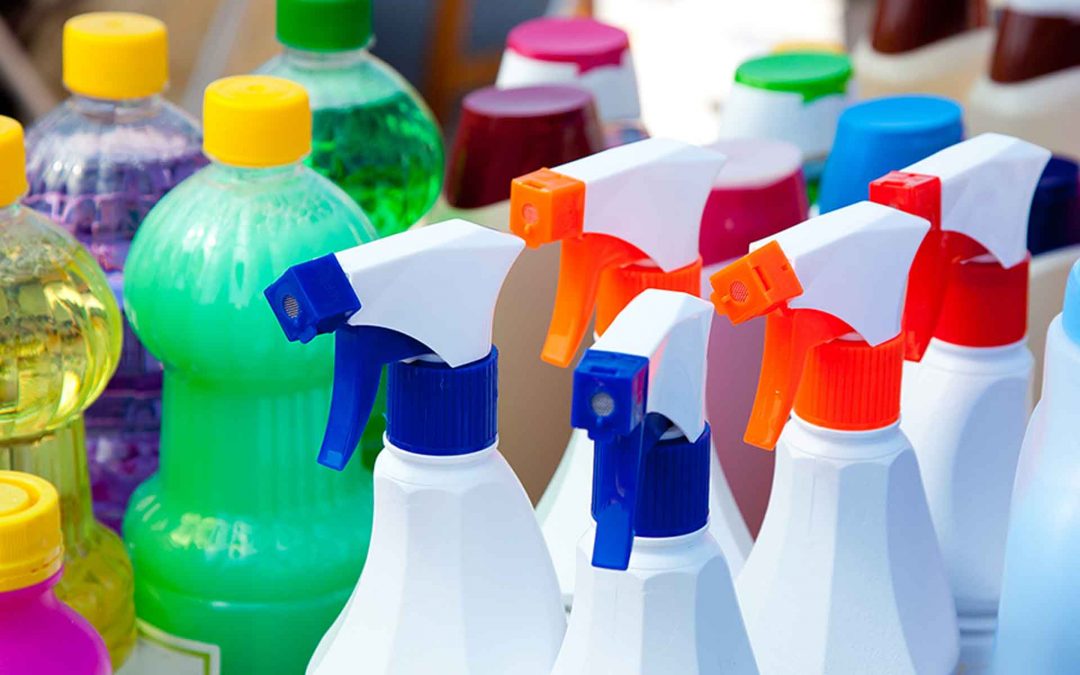As air fresheners and other cleaners release an “ocean breeze”, we rarely consider what’s inside these chemically-based products.
If there are known side effects from using chemically-based products, why are these cleaners even allowed on the shelves? Shouldn’t manufactures at least be required to put a warning on the label?
You might be surprised to learn that manufacturers are not required to list all of the ingredients in their products.
The term “fragrance” is a catch-all for proprietary chemical blends. There could be (and are) any number of harmful chemicals masked under the simple term “fragrance.
The Truth About Chemically-Based Products
While at a quick glance that “germ buster” on the shelf looks very promising, it likely contains a dangerous blend of chemicals that can linger in your body for years to come after inhaled.
For example, VOCs (volatile organic compounds), which you’re almost certainly guaranteed to find in every chemically-based product, damage our organs as they build up carcinogens that have been shown to lead to disease.
In fact, while disinfectants work great, they contain pesticides with high amounts of carcinogens and endocrine disruptors, as well as other “cleaning agents” that can lead to cancer and hormonal issues.
For instance, APEs (Alkylphenol Ethoxylates) are found in all-purpose cleaners and detergents, while organochlorines are present in degreasers and bleach, and styrene is found in waxes and polishes.
Our waterways and soil are being affected as well. Every time we clean with toxic chemicals where does the cleaning agent end up? Clean the toilet and the chemicals go down the drain. Dish detergents do their job and are then down the drain as well. Water treatment facilities currently cannot filter out all of the toxins. So where do all the harmful chemicals go?
How We Can Protect Ourselves & Our Families
First, stay informed. You’re taking the first step to better health right now as you read this article. If we aren’t aware of the health risks, how can we avoid them and make better choices?
Learn to read labels, research chemical risks, and lookout for signal words. Second, tell others. Now is the time to activate change. If more consumers demand safe products, manufactures will supply the demand.We can affect change.
Stop purchasing chemical laden products. Stop hiring cleaning companies that don’t care about health. Refuse to purchase items that don’t disclose all the ingredients we’re using in our homes, where we prepare our food, where we live, were we sleep, where we breath.
Third, make small steps forward. Change doesn’t happen overnight, so stick by your guns. Before you know it, your home will be a safe haven from the toxins that surround us daily.
Lastly, stick with it. Too much is at stake. We don’t always notice the effect of chemicals right away. Our body can filter small doses, but we are bombarded with toxins daily, and over time they are absorbed and stored in our bodies to the point of developing serious health conditions.
How many people do you know with chronic illnesses, tumors, or cancer? While it’s virtually impossible in this day and age to be completely toxin free, imagine how different their lives would be if more regulations were in place.
For now, simply look for that Green Seal logo and aim to hire eco-friendly cleaning companies only.

